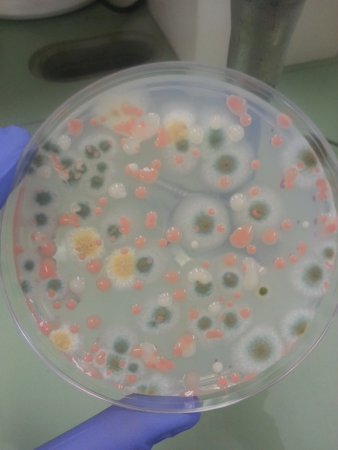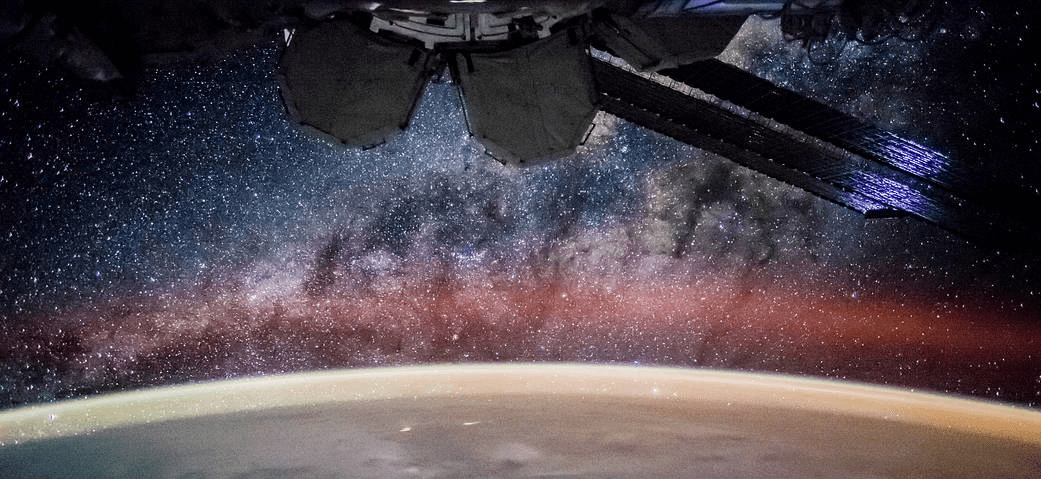What’s Growing on the Space Station’s Walls?
Observing How Microbes Adapt in a Spaceflight Environment
Many people know that the International Space Station is a unique microgravity research laboratory in low-Earth orbit where astronauts conduct experiments in biology, physics, astronomy and other fields. However, the space station is also ideal for observing Earth microbes – single-cell organisms so tiny that millions can fit into the eye of a needle – in a new environment.
Microbial Tracking-1 (MT-1) is a three-part flight investigation that monitors the types of microbes present on the surfaces and in the air of the space station over a one-year period. Sampling microbes multiple times enables scientists to understand the diversity of microbes on the station and how the microbial population varies over time. After astronauts collect microbes, they send samples back to Earth for further study. The first two sets of samples have been returned to Earth and analyzed. The third flight launched on the eighth cargo resupply mission of a SpaceX Dragon capsule to the space station April 8, and will complete the series. The final samples are planned to return on Dragon as soon as May 11.
Findings from the MT-1 study will provide information to evaluate potential risks to astronaut health stemming from microbes on board. NASA is also interested in developing ways to minimize hazards from microbes during long-duration crewed missions, including on the journey to Mars. Genetic information collected from the MT-1 series will be made available to the scientific community and the public via an open-access, collaborative platform developed by NASA called GeneLab.
“By using both traditional and state-of-the-art molecular analysis techniques, we can build a clearer picture of the International Space Station’s microbial community, helping to spot microbial agents that may damage equipment or potentially threaten astronaut health, and identify areas in need of more stringent cleaning,” said “Kasthuri Venkateswaran, Microbial Tracking-1 principal investigator and senior research scientist at NASA’s Jet Propulsion Laboratory in Pasadena, California.
Following the recommendation of the National Research Council’s 2011 Decadal Survey Report, NASA is supporting research that uses the space station as a microbial observatory to conduct long-term, multigenerational studies of microbial population dynamics. Because the station is an enclosed system, the only way that microbes get to the station is on the contents of resupply missions from Earth and from the astronauts themselves during crew changes. Scientists can observe how the diversity of microbes on the station responds to the contained and monitored microgravity environment over long-term habitation.
“The Microbial Tracking-1 series plays a research role in assessing the amounts and diversity of bacteria on the space station using high-throughput molecular-based methods,” said Fathi Karouia, Microbial Tracking-1 project scientist, at NASA’s Ames Research Center in Moffett Field, California. “Results that derive from such studies will enable NASA to better understand the microbiome of the space station, how it evolves over time, and could provide solutions in mitigating future risks associated with crew health and mission integrity.”
The results could also be translated back on Earth where the same observation strategies could be used to measure microbes in hospitals, pharmaceutical laboratories, homes, and other environments where humans and microbes reside together.
Both the MT-1 project and Genelab are sponsored by the Space Biology Program within the Space Life and Physical Sciences Research and Applications Division (SLPSRA) at NASA Headquarters in Washington D.C.
Author: Sandy Dueck, NASA Ames Research Center
Media contact: Darryl Waller, NASA Ames Research Center
































